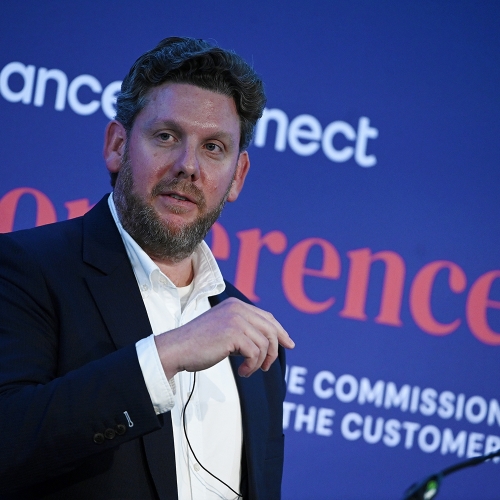Summary
The most recent Asset Finance Connect webcast, sponsored by FIS, brought together a wealth of auto industry expertise to discuss the finance first concept that provides pre-financing at the start of the customer journey, and both enables sales and ensures long-term customer loyalty.
Carpass is a business concept that pulls together operations, technology and business processes to engage the customer online for finance at the beginning of the car-buying journey and then provide the necessary technology to support that customer in their buying decision regardless of brand.
When developing this finance first platform, Tony Lynch, owner of Carpass.ai, asked the question: ‘as a finance company, what comes first – the car or the finance?’
Lynch believes that all car-buying journeys start online and most of those journeys need finance: “As a finance company we have traditionally been an enabler to the motor company, but we should be the customer acquiror, maybe the finance is that important to the customer that they can be pre-approved online for finance and then we’ll help you buy a car.”
There is an enormous opportunity for captives, such as Toyota Financial Services, to play a much bigger role according to Lynch and Toyota Financial Services’ Martin Muessener. Together, they started to realise that if the captive could pre-finance the customer at the beginning of the car-buying journey, they could potentially influence their car-buying decision towards the captives’ brand.
Martin Muessener pointed out that, since 2017, Toyota Financial Services has been observing customer behaviour in Europe regarding finance first. Since 2017, there has been an increase of 15% of car buyers who would prefer to finance first, providing an increasing opportunity to ‘hook’ in the consumer in the finance first phenomenon.
For captives, finance first is a new way of thinking and involves opening a new channel with finance first and direct to consumer. This will enable them to widen their customer base and loyalise customers. The conquest potential to get the customer to change brands leads to future growth.
Nick Brownrigg, CEO at BMW Financial Services Nederland B.V., highlighted that pre-authorising people for credit is not a new concept, but it must be done in an easy manner for customers who strive for ease of use. Brownrigg believes that digitisation in the car-buying journey is extremely important, as is the marketing effort as you still need to drive people to buy and not just simply visit your website.
David Nield sees the different drivers for finance first or car first depending on the confidence of the consumer being able to access credit. Everyone starts in a different place according to Nield, with sub-prime customers starting from what they can finance. The monthly payment is critical at any stage in the journey for the lender and customer from an affordability point of view.
Nield believes that the customer journey should enable the different starting points for customers depending on their needs, but current models don’t operate smoothly and are not customer oriented. As Nield states, “Customers can fulfil so much more of their journey online, a journey that should be customer first.”
Nick Brownrigg agrees that the car-buying journey should be moved to a single digital channel which should be the channel of the customer’s choice, for example, a mobile app.
Adapting technology
Traditional tech systems are built for car first and then finance, according to FIS’s David Woodroffe. Finance first would turn these systems on their head!
The car-buying journey is no longer a linear journey as it was five to ten years ago, according to Woodroffe. There needs to be a workflow reorientation to bring the finance approval to the start of the process at the front of the system. With pre-approval upfront, Woodroffe believes that we need to lessen the burden on the customer at the front-end to avoid a drop-off of customers having to fill out multiple forms. Information capture needs to be streamlined, using open banking services for affordability checks, dynamic pricing and eIDV (Electronic Identity Verification), in order to minimise the friction upfront.
To address the technical challenges presented with finance first, Woodroffe does not see any major problems that can’t be solved by stitching the journey through APIs – opening platforms and distributing capabilities through APIs. While the tech is available, Woodroffe points out that investment is needed to open and share data in the industry and make it accessible to APIs.
Genpact’s Harvey Maddocks sees the finance first conversation lending itself to artificial intelligence (AI). Amar Rana agrees and sees the future use of machine learning to speed up pre-approval and underwriting. AI could be used to collect the missing data, not to make the decision.
As FIS’s David Woodroffe confirms, “the use of data and machine learning is definitely part of the picture moving forward.”
“AI is going to change every aspect of the car-buying journey”
Tony Lynch
Tony Lynch sees AI as a very powerful tool that will change every aspect of the future car-buying journey. When looking at predictability of buying intent, the most basic form of intent is engagement, and the more the customer is engaged the more likely they are to buy.
Lynch believes that AI chatbots are genius at this type of engagement, answering just as competently as a salesperson: “If the success of finance first is based upon the conclusion of the sale, then the AI chatbot is going to be essential for us being able to scale it, especially across multiple markets and regions.”
Changing landscape
In researching and developing the finance first business processes, Tony Lynch found that customers are online for approximately three months browsing for a car. During this time, Lynch feels that finance companies should embrace the finance first initiative by engaging with the customer to provide information early in the journey and build a beneficial customer profile and loyalty over time.
As Lynch states, “pre-approval creates a level of loyalty which persists throughout the car-buying journey,” with the finance company engaging with the customer on the platform and providing a level of support.
“Financing pre-approval creates a level of loyalty which persists throughout the car buying journey”
Tony Lynch
While finance first is beneficial for the customer, is it attractive for the independent and network dealer channels? Martin Muessener sees a potential issue with independent dealers receiving a pre-approved finance first customer, with the temptation for the dealer to turn the customer to their own financing options.
For network dealers, finance first does the ‘fishing’ on the dealer’s behalf, sending them customer leads that they wouldn’t normally get as they are outside of the dealer channel. Customer credentials and shopping behaviour can be shared with the dealer who can then make predictions on how likely the customer is to buy a car, which has the potential to turn into a brand conquest for the dealer and greater customer loyalty.
Challenges
Finance first does present some challenges, including financing pre-approval without knowing what car it is being used for. This causes problems with current soft search systems that have an auto proposal system which must include a car.
Looking at financing pre-approval, CrediCar’s Amar Rana is concerned as underwriters will need to account for the fact that no car has been chosen at the initial stage. This causes an added complication, especially in the UK when trying to conform to the new consumer duty guidelines as you cannot give the customer a false sense of pre-approval. Rana points out that initial eligibility checks won’t take the vehicle into account but obviously when final financing approval is given, the vehicle will be added to the equation.
Another issue relates to the uncertainty of what finance product the customer will decide on at the end of the journey, as the type of product taken will change the RV. The tech system needs to be dynamic enough to fulfil the customer experience even if they change fields in the finance package.
Prime or sub-prime?
While finance first appears to present a more attractive option to sub-prime rather than prime customers, sub-prime customers are not necessarily the customers that a captive wants. Captives want the prime customers, but finance first is less attractive to them as generally they already know what they can afford and don’t need to get the finance first.
Martin Muessener sees opportunities for finance first in prime customers, especially those who are undecided about the finance product or car, customers who like to be guided and like the approach of curated sales and a premium trusted online service.
BMW’s Nick Brownrigg sees benefits for both prime and sub-prime customers in finance-first. For prime, it gives more value-added, more options and makes the process easier. For sub-prime it can enable you to get a car, based on what you need and can afford. According to Brownrigg, “if you are enabling a customer to make a purchase they need to make, that is the subprime; if you are adding value to a customer who knows they can already afford it by giving them the options or just by making the process easier, that is a prime customer with a good credit rating.”
However, Brownrigg sees that much of the value that is delivered to customers to generate loyalty comes after the point of purchase, over the next two to three years after they have made the financing purchase.
“If you are enabling a customer to make a purchase they need to make, that is the subprime; if you are adding value to a customer who knows they can already afford it, that is a prime customer”
Nick Brownrigg
Concluding remarks
“Finance first puts the customer in the driving seat,” according to Toyota Financial Services’ Martin Muessener. This direct consumer approach provides increased customer convenience, flexibility and freedom. While there is less of a structured sales process in finance first, for practical reasons there is more of a default approach at the beginning of the journey.
While Tony Lynch also sees benefits in finance first for the consumer, where they can see what they can afford, the monthly payment and likelihood of financing approval before moving along the platform looking at a potential car purchase, he also highlights the opportunities for increased sales and customer loyalty for the finance companies.
“Finance first puts the customer in the driving seat”
Martin Muessener








